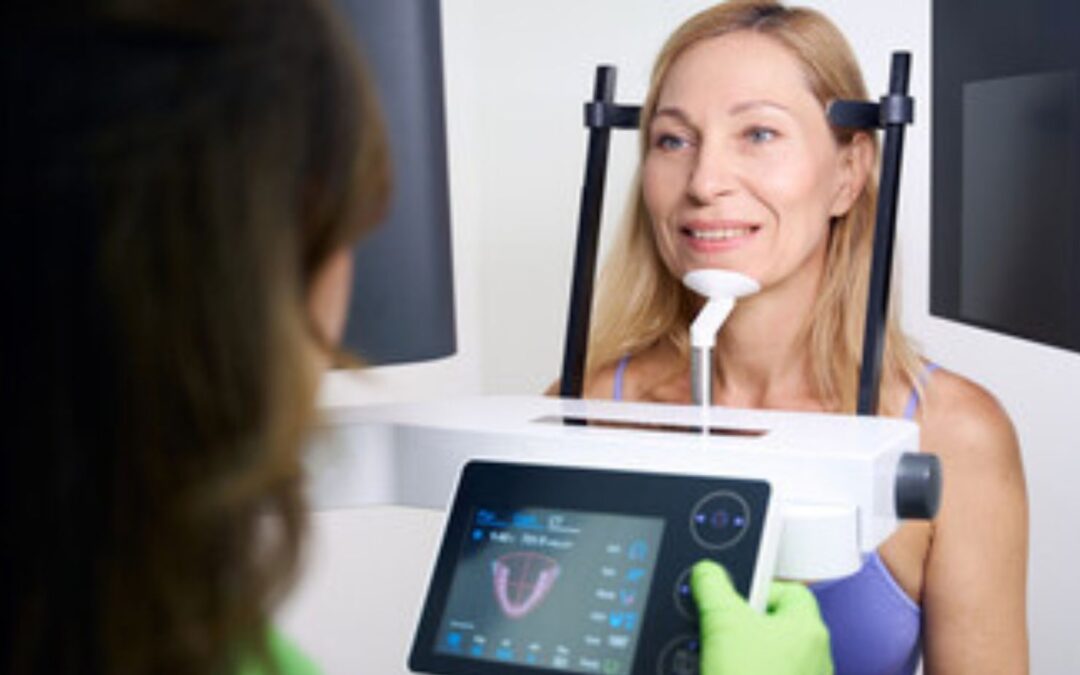Orthodontic treatment is a journey towards a beautiful and healthy smile. While traditional braces and aligners have proven effective, technology continues to revolutionize the field.
One such advancement is the cone-beam computed tomography (CBCT) scan. It’s a specialized X-ray that creates incredibly detailed, three-dimensional images of your child’s teeth, jawbones, and surrounding soft tissues.
Unlike traditional X-rays, which provide a flat, two-dimensional view, advanced CBCT imaging offers a comprehensive look at your child’s oral structure. This level of detail empowers orthodontists to make more accurate diagnoses and develop personalized treatment plans.
Understanding the CBCT Scan
A CBCT scan is a quick and painless procedure. Your child will stand or sit still while the CBCT machine rotates around their head, capturing images from different angles.
The radiation dose from advanced CBCT imaging is significantly lower than that of a traditional CT scanner, making it safe for children. It’s important to note that this radiation exposure is comparable to the background radiation we encounter daily.
Benefits of a CBCT Scan for Orthodontic Treatment
A CBCT scan provides invaluable information for your child’s orthodontic journey. Let’s explore how it benefits their treatment:
Precise Diagnosis
Orthodontists rely on accurate diagnoses to create effective treatment plans. CBCT scans help identify underlying issues that may not be visible in traditional dental X-rays, such as impacted teeth, bone density problems, or jaw abnormalities.
Tailored Treatment Plans
With the detailed information from a CBCT scan, your child’s orthodontist can create a customized treatment plan that addresses their specific needs. This precision minimizes treatment time and maximizes results.
Improved Treatment Accuracy
CBCT scans help orthodontists visualize the position of teeth and jawbones in three dimensions.

This allows for more accurate placement of braces or aligners, reducing the risk of complications and ensuring a straighter smile.
Monitoring Treatment Progress
Regular CBCT scans can track your child’s orthodontic progress and identify any changes in their teeth or jaw alignment. This enables your orthodontist to make necessary adjustments to the treatment plan.
Identifying Potential Issues Early
CBCT scans can detect early signs of dental or jaw problems, such as tooth decay, gum disease, or TMJ disorders. Early detection is crucial for timely intervention and preventing more serious issues.
When Is a CBCT Scan Necessary?
A CBCT scan isn’t always needed. However, it can be very helpful in specific cases. Here are some situations where a CBCT scan can be beneficial:
- Complex orthodontic cases: If your child has crowded teeth, impacted teeth, or jaw problems, a CBCT scan can help your orthodontist fully understand the issue.
- Jaw surgery: If your child needs jaw surgery along with braces, a CBCT scan provides detailed information about the bones and tissues involved.
- Breathing problems: If your child snores or has sleep apnea, a CBCT scan can help identify any issues with the airway and jaw structure.
- Dental injuries: If your child has injured their teeth or jaw, a CBCT scan can show the extent of the damage.
- Gum disease: While not primarily an orthodontic concern, a CBCT scan can help diagnose and monitor gum disease.
A CBCT scan provides valuable information that can help your child’s orthodontist create the best possible treatment plan.
Safety and Comfort
Your child’s safety and comfort are top priorities. CBCT scans are considered safe and painless. The radiation dose is minimal, and the entire procedure takes only a few minutes. Many orthodontic offices offer sedation options for anxious children.
CBCT Scans and Dental Implants
CBCT scans are invaluable tools for implant dentists. They offer a clear picture of your jawbone, making dental implant placement more precise and successful.

- Detailed Bone Assessment: CBCT scans reveal your bone density, shape, and overall quality. This helps your dentist choose the right implant size and placement.
- Nerve Location: Your jaw contains nerves. CBCT scans pinpoint their exact location, reducing the risk of damage during implant surgery.
- Sinus Evaluation: For upper jaw implants, CBCT scans check the distance between your implant site and sinuses. This prevents complications.
- Treatment Planning: With detailed 3D images, your dentist can plan your implant surgery meticulously, increasing success rates.
CBCT scans empower your dentist to make informed decisions, leading to a smoother implant process and long-lasting results.
CBCT Scans vs. Conventional CT Scans
While both CBCT and conventional CT scans use X-ray technology, CBCT scanners are specifically designed for dental and maxillofacial radiology. They offer several advantages, including lower radiation dose, faster scan times, and improved image quality for dental applications.
The CBCT Scan Process
A CBCT scan is a single scan that captures a large volume of data. Unlike traditional dental X-rays or panoramic X-rays, it requires no special preparation. Here’s what happens:
- Preparation: You’ll remove any metal objects like jewelry or glasses.
- Positioning: The dental team helps you sit or stand comfortably while supporting your head.
- Scanning: The CBCT machine rotates around your head, taking pictures. This takes a short time.
- Image creation: A computer processes the images to create a detailed 3D picture of your teeth, jawbones, and surrounding tissues.
You and your child can wear your regular clothes, and there’s no need to remove jewelry. The scan itself is quick, and you can resume your normal activities immediately afterward.
Final Thoughts
A CBCT scan is a game-changer for orthodontics and dental implants. It offers a clear path to a healthier, more beautiful smile. Don’t wait, and talk to your dentist about a CBCT scan today!
Ben Austin is the founder and CEO of multi-award-winning digital marketing agency Absolute Digital Media. Ben loves to write and share exclusive insights into the world of digital marketing from his own eyes.





